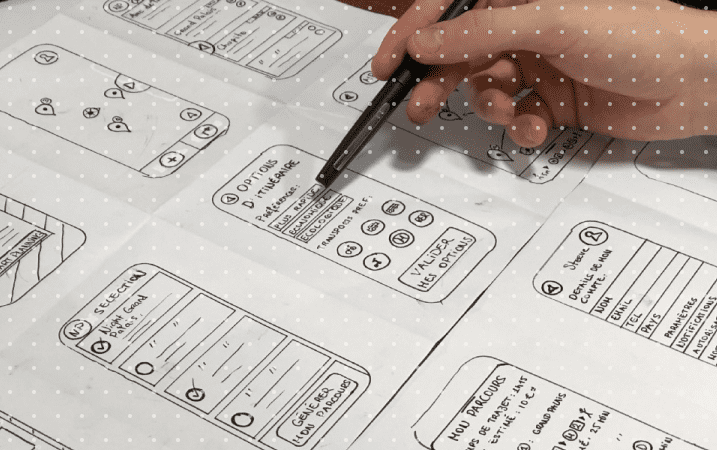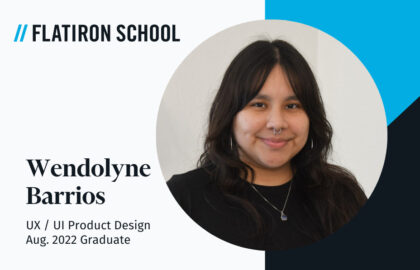What is UI design? Is it the same as UX design? How about Product Design – how does that fit in relation to UI and UX? These are all very common questions! While the lines amongst the three can sometimes blur, these are three unique ways to think about design.
This guide will explain UI, UX, and Product Design as well as discuss how the digital design industry (including hiring managers) view each.
What is UI (User Interface) Design?
UI design focuses on the visual experience of a digital product. This may include fonts, colors, style guides, animations, and responsive design for devices with varying screen sizes.
UI Designers’ output is exclusively visual; they usually come late in the design process, right before it’s handed off to developers.
UI Designers may ask themselves the following questions:
- Do the visual elements of the website render properly regardless of screen size, whether it’s a desktop, tablet, or mobile phone?
- Is the imagery relatable to customers? Is it authentic and genuine?
- I want the customer to click on a call-to-action, such as “Buy Now.” Is that call-to-action surfaced in a clear, compelling way that will draw a customers’ attention and ultimately entice them to click?
Out of the three design approaches (UI, UX, Product Design), UI Designer roles were the first to become popular with hiring managers. However, over time the industry realized there was a missing link: beautiful visuals don’t always translate into a seamless, user-friendly experience. That’s when UX design started to gain popularity.
What Is UX (User Experience) Design?
UX design focuses on the total user experience of a digital product. Take for example a mobile application that sells shoes.
A UX Designer would conduct and leverage customer research to understand any roadblocks customers may experience when browsing through all the different shoe options – brand, color, sizes, etc. – as well as develop and implement solutions.
UX Designers may ask themselves the following questions:
- Is my design intuitive to customers? Do customers clearly understand how to interact with the website or application?
- What data is available to help me understand how customers are navigating through the website or application? How can I leverage that data to pinpoint issues, and how can I update the design to address?
- Does my design speak to customer personas?
UX Designer roles are still prominent in today’s job market, though some companies label their roles as such when they really want a UI Designer (or vice versa).
There is clearly a need for both UX and UI Designers, which is why over the past few years there has been an increase in Product Designer roles.
What Is Product Design?
Product Design is a holistic concept that spans across both UX and UI. Product Designers (sometimes known as UX / UI Designers) are a jack of all trades with deep understanding of UI, UX, as well as business goals and competition. They are strategic, creative problem-solvers that have various responsibilities such as wireframing, testing plans, managing a team, and working alongside marketing and engineering teams.
Product Designers may ask themselves the following questions:
- Is my design positioned to meet the stated business goals?
- How much does my design cost (dollars and team bandwidth)? Does that cost make sense given the expected outcomes of this design?
- What is the future vision for this digital product, and what steps do we need to take to achieve that vision?
In recent years the job market has experienced an uptick in Product Design roles, especially amongst small, nimble, start-up companies. There are two primary reasons for this:
- Design often is the primary product. Take for example a company like Netflix. The entire experience is digital and thus the revenue stream is dependent on seamless, cost-effective, conversion-based customer experiences.
- Companies often need both UI and UX and so it’s easier to hire one person who has both skill sets.
Product Design Is The Future
Flatiron School believes that Product Design roles are here to stay and will only increase over time. That’s why we created a holistic course that teaches both UI and UX Design, as well as modern tools (Figma) and concepts (ethical and inclusive design). Our course also includes project work, intended to help students create portfolios that will catch the eye of a hiring manager.
Learn more about our approach to teaching UX, UI, and Product Design or apply today. Once you apply, you’ll speak with our Admissions reps who can answer all your questions and help you decide next steps.




